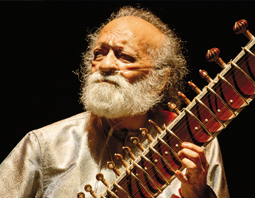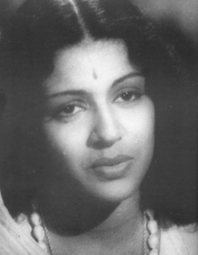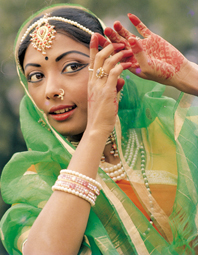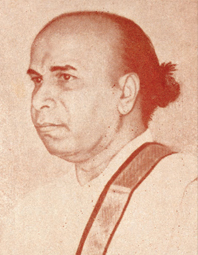COVER STORY - Bharat Ratna by V. Ramnarayan

It was hardly surprising that sitar maestro Ravi Shankar was a huge youth icon in the 1960s, during the hippie and Beatles era. With his delicate good looks, his scintillating music, and his spontaneous showmanship he cast a magical spell on youngsters in at least two continents. His forays with tabla ustad Allah Rakha, the joie-de-vivre of their brilliant on-stage sallies, their obvious enjoyment of each other’s music made the audience’s ignorance of their art irrelevant. His jugalbandis with sarod expert Ali Akbar Khan were equally exciting journeys into untrodden paths.
What was unusual was that Ravi Shankar remained a youth icon all his life, even though both he and his music matured and mellowed through the decades. One of the reasons why he remained fresh and creative till the very end was the fact that he looked beyond the classical music performance stage to widen his horizons through forays into film music, fusion or world music, teaching students from all parts of the world, attempts at orchestrating Indian instrumental music, collaboration with dancers and dance companies, borrowing ragas from the south Indian system and creating new ragas. The one central impulse that arguably drove all his adventures was his overwhelming desire to champion the cause of Indian music worldwide.
SPECIAL FEATURE - Beyond Music by Gowri Ramnarayan

There was something unique about Subbulakshmi’s voice, its ability to range effortlessly across three octaves. The natural gift had been burnished with unwavering sadhakam in the formative years. Vidwan M. Balamuralikrishna once noted that she was the first Carnatic musician to introduce voice modulation. It did not develop out of a focus on craft, but happened unconsciously, as she became one with the music she made. That total involvement electrified listeners when she plumbed the depths in the mandra sthayi, a rarity in women singers, or scaled the peaks in the tara sthayi. As MS swayed gently between the two tamburas, reached a high note and sustained it in karvai, the effort of will produced a profound effect upon her audiences. It was at such moments that “we discover our lost soul.”
Her music notebooks testified to her all round concern for every aspect of rachita or composed music, a vital part of Carnatic music, dear to musicians as the outpourings of saintly souls in Telugu, Kannada, Sanskrit, Tamil and Malayalam. MS sang in north Indian languages too, mainly Hindi, Marathi and Gujarati. One of her albums contains songs in 10 languages! Once-in-a-while attempts include the English hymn by Rajaji that she sang with Radha at the United Nations as a goodwill gesture, and an amalgamation of apt lyrics in Sanskrit, Arabic, Japanese and Tamil (even English) at the Afro-Asian Congress of Ophthalmology in 1976.
Every one of these songs, by composers old and new, was first inscribed with its meaning in her notebook, and then each phrase was notated with its literal and metaphoric meanings. Music notation came next.
SPOTLIGHT - A life dedicated to Kathak by Sunil Kothari

Well known Kathak exponent Saswati Sen was honoured with the title of Nritya Choodamani by Sri Krishna Gana Sabha on 8th December 2012, in Chennai.
With her lovely features and a svelte figure, Saswati has exquisite command over tala and laya. Her abhinaya is subtle, reflecting the delicacy of the Lucknow gharana of Kathak, her dancing is discreet and marked by auchitya. She structures her recitals with a sense of programming and displays her mastery over the complexities of the dance form in a seamless manner. Saswati Sen is a name to reckon with in the world of Kathak. For well over four decades, Saswati has been learning, performing and teaching Kathak.
The artistic journey of this girl, born into a family of doctors, began at the age of six when she started learning from Reba Vidyarthi at the Kathak Kendra in Delhi. She mastered the basics under her guidance.
PROFILE - Palghat Rama Bhagavatar

Palghat Rama Bhagavatar was born on 5th June 1888, at Munda Mukha near Shoranur, to village revenue official Kasturi Ranga Iyer and Alamelu Mangai, as their fifth and last son. Kasturi Ranga Iyer had a modest income which helped meet the barest needs of the family. They had a small, unpretentious home with a well in the backyard. The village was on the banks of the Bharata Puzha river. The presiding deity of the village was Lord Ayyappan.
Rama Bhagavatar attended the village school and learnt the Vedas and sastra-s. His elder brother Venkatakrishna Bhagavatar, who had a flair for classical music, became an exponent of Kathakali padams. He taught young Raman to sing along with him. Rama Bhagavatar was then eight years of age. This laid a firm foundation in young Raman, who in addition to the padams, also absorbed the nuances of Carnatic music.


